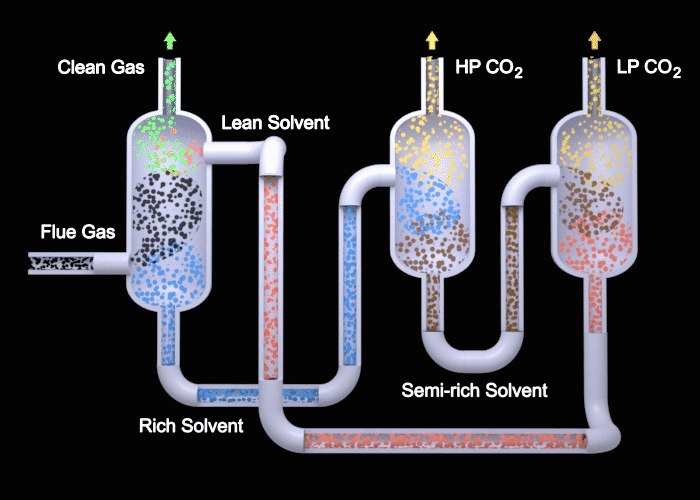(From Wet Waste to Flight: Scientists Announce Fast-Track Solution for Net-Zero-Carbon Sustainable Aviation Fuel)
2021-03-15 アメリカ合衆国・国立再生可能エネルギー研究所(NREL)

・ NREL、デイトン大学、イェール大学およびオークリッジ国立研究所(ORNL)が、既存のジェットエンジンに適用可能で CO2 排出ゼロの飛行を支援する、食品廃棄物や含水廃棄物の未利用エネルギーを使用したバイフォリファイニングによる持続可能な航空燃料(sustainable aviation fuel: SAF)に関するレポートを発表。
・ 2050 年までにパンデミック前レベルの 2 倍のジェット燃料需要が見込まれる中、航空機による CO2排出量の低減が期待され、燃料、エンジンや新興技術における革新の重要性が高まっている。
・ サウスウェスト航空をはじめとする主要な航空会社は、NREL 等と共同で米国エネルギー省(DOE)の含水廃棄物を使用した飛行実証プロジェクトを実施中。サウスウェスト航空は、商業利用可能なSAF の実用に向けた取り組みの一環として 2019 年より NREL との協働を開始している。
・ 今回のレポートは、これらの活動を実証から商用レベルに引き上げるもの。同レポートのバイオリファイニングプロセスのスケールアップが実現できれば、主要な航空会社による商用飛行での含水廃棄物 SAF の利用開始に向けた燃料規制の承認が 1~2 年内に獲得可能と考える。
・ 食品廃棄物の大規模なカーボンフットプリントを活用する SAF により、化石燃料由来の航空燃料に比して 165%の CO2 排出量削減が可能であることを提示。食品廃棄物は毎年数百万トンが埋め立て処理され、CO2 の 20 倍の温暖化ガスであるメタンを排出している。
・ 過去の研究では、含水廃棄物由来の SAF の可能性およびジェット燃料にアップグレードできる揮発性脂肪酸(volatile fatty acids: VFA)への食品廃棄物のカーボンエネルギーの転換を提示したが、ASTM の燃料要件規格に見合わなかった。
・ 今回のレポートでは、VFA の高度化の分析と共に同規格に準拠したドロップイン SAF を提案。航空会社による VFA-SAF の大量使用を可能にする。
・ より高い混合率に向けた ASTM 承認取得の道筋を提供する、イソパラフィンを生成する追加的なステップについて説明。イソパラフィンとパラフィンを組み合わせた SAF では、従来のジェット燃料への最大 70%までの混合が可能となる。
・ 本研究は、DOE のバイオエネルギー技術局の Opportunities in Biojet プログラムおよび Chemical
Catalysis for Bioenergy Consortium が支援した。
URL: https://www.nrel.gov/news/program/2021/from-wet-waste-to-flight-scientists-announce-fast-track-solution-for-net-zero-carbon-sustainable-aviation-fuel.html
<NEDO海外技術情報より>
(関連情報)
米国科学アカデミー紀要(PNAS)掲載論文(フルテキスト)
Toward net-zero sustainable aviation fuel with wet waste-derived volatile fatty acids
URL: https://www.pnas.org/content/118/13/e2023008118
Abstract
With the increasing demand for net-zero sustainable aviation fuels (SAF), new conversion technologies are needed to process waste feedstocks and meet carbon reduction and cost targets. Wet waste is a low-cost, prevalent feedstock with the energy potential to displace over 20% of US jet fuel consumption; however, its complexity and high moisture typically relegates its use to methane production from anaerobic digestion. To overcome this, methanogenesis can be arrested during fermentation to instead produce C2 to C8 volatile fatty acids (VFA) for catalytic upgrading to SAF. Here, we evaluate the catalytic conversion of food waste–derived VFAs to produce n-paraffin SAF for near-term use as a 10 vol% blend for ASTM “Fast Track” qualification and produce a highly branched, isoparaffin VFA-SAF to increase the renewable blend limit. VFA ketonization models assessed the carbon chain length distributions suitable for each VFA-SAF conversion pathway, and food waste–derived VFA ketonization was demonstrated for >100 h of time on stream at approximately theoretical yield. Fuel property blending models and experimental testing determined normal paraffin VFA-SAF meets 10 vol% fuel specifications for “Fast Track.” Synergistic blending with isoparaffin VFA-SAF increased the blend limit to 70 vol% by addressing flashpoint and viscosity constraints, with sooting 34% lower than fossil jet. Techno-economic analysis evaluated the major catalytic process cost-drivers, determining the minimum fuel selling price as a function of VFA production costs. Life cycle analysis determined that if food waste is diverted from landfills to avoid methane emissions, VFA-SAF could enable up to 165% reduction in greenhouse gas emissions relative to fossil jet.



